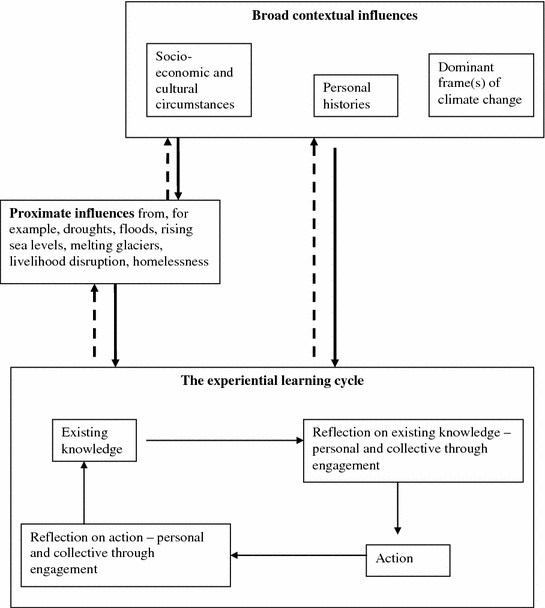All posts tagged The Lived Experience of Climate Change

1. Have a relatively well-defined and stable problem statement. 2. Have a definite stopping point, i.e. we know when the solution is reached. 3. Have a solution which can be objectively evaluated as being right or wrong. 4. Belong to a class of similar problems which can be solved in . . . Read more

Fig. 1.1 The flood plain of the River Severn on the Wales-England border does its job after heavy rain in December 2014 (G. Wilson, 2014) 1.3 The Rich Diversity of Lived Experience The potential diversity of lived experience as personally felt is, by definition, vast. The interviews with the British flood . . . Read more

This winter the UK has been affected very severely by an exceptional run of winter storms, culminating in serious coastal damage and widespread, persistent flooding. This paper documents the record-breaking weather and flooding, considers the potential drivers and discusses whether climate change contributed to the severity of the weather and . . . Read more
Fig. 10.1 The policy cycle (ROAMEF) of the UK government Treasury As noted above, evidence is required for each of these stages. Hallsworth et al. (Ibid.), however, provide a critique of this rationalist approach to policy, concluding: In this ‘ROAMEF’ cycle, each stage follows on rationally from the previous one, so . . . Read more
Fig. 11.1 People march during a rally against climate change. Manhattan, New York 21 September 2014 [Reuters]. http://www.euractiv.com/sections/energy/300-000-march-against-climate-change-new-york-308605#comment-1 Throughout her book This changes everything: capitalism vs the climate, Klein (2014) espouses social movements as a countervailing power and the glimmer of light for meeting climate change and other global challenges. Thus, . . . Read more
Fig. 9.1 Tree-planting in the United Kingdom. A significant number of people plant trees on plots of land that they own or share. Trees have a role in capturing carbon dioxide from the atmosphere through the process of photosynthesis. They also arrest water run-off, which is important after heavy rain, and . . . Read more
Fig. 8.1 First page of a flip-chart presentation from a group of NGO practitioners in Uganda who have been deliberating about lived experience and climate change 8.2 To What Extent Is It Desirable to Expand the Boundaries of Our Lived Experiences Beyond Prevailing Social Norms of Attention? The main reason for . . . Read more
Fig. 7.1 The frustration of communicating climate change to the public. (Cartoon by Jon Kudelka. Source http://www.smithsonianmag.com/science-nature/talking-about-climate-change-how-weve-failed-and-how-we-can-fix-it-180951070/?no-ist.) Thus in Moser and Dilling’s edited collection that draws from the United States experience, we find a concerted attempt to move beyond simply attempting to disseminate information and knowledge in traditional ways (Dilling and . . . Read more
Fig. 2.1 Multi-model ensemble mean of projected changes in December, January and February (DJF) and June, July and August (JJA) surface air temperature for the period 2016–2035 relative to 1986–2005 under RCP4.5 scenario (left panels). RCP4.5 refers to representative concentration pathway 4.5, one of four greenhouse gas atmospheric concentration trajectories that . . . Read more
Fig. 5.1 Resurrection of indigenous knowledge in Jaipur, India. This channels system reflects ancient knowledge of water conservation. The channels bring rainwater from the surrounding hills to Jaigarh Fort which was built circa fifteenth to eighteenth centuries. There they fill three underground tanks, capable of storing almost 30 million litres of . . . Read more


